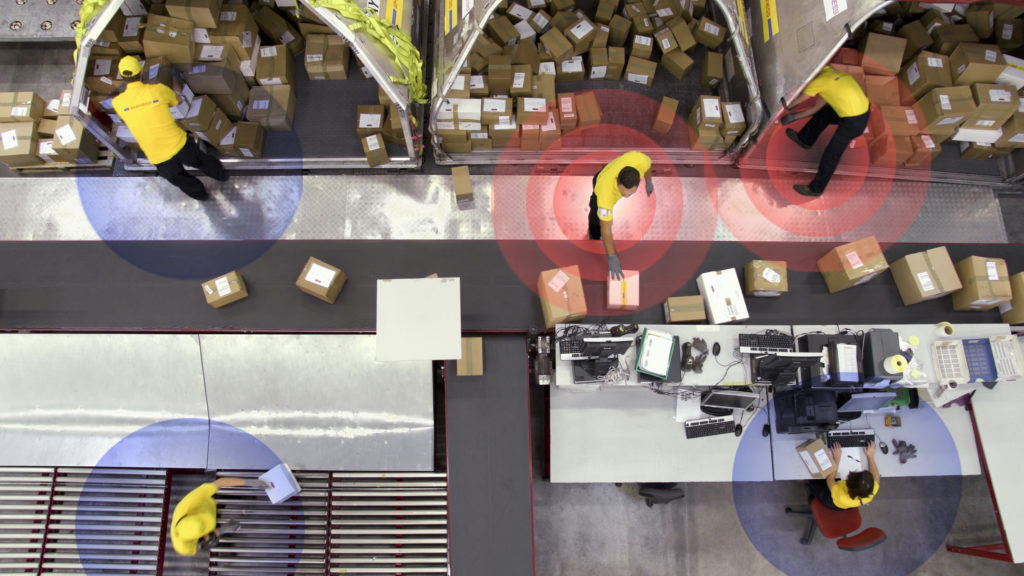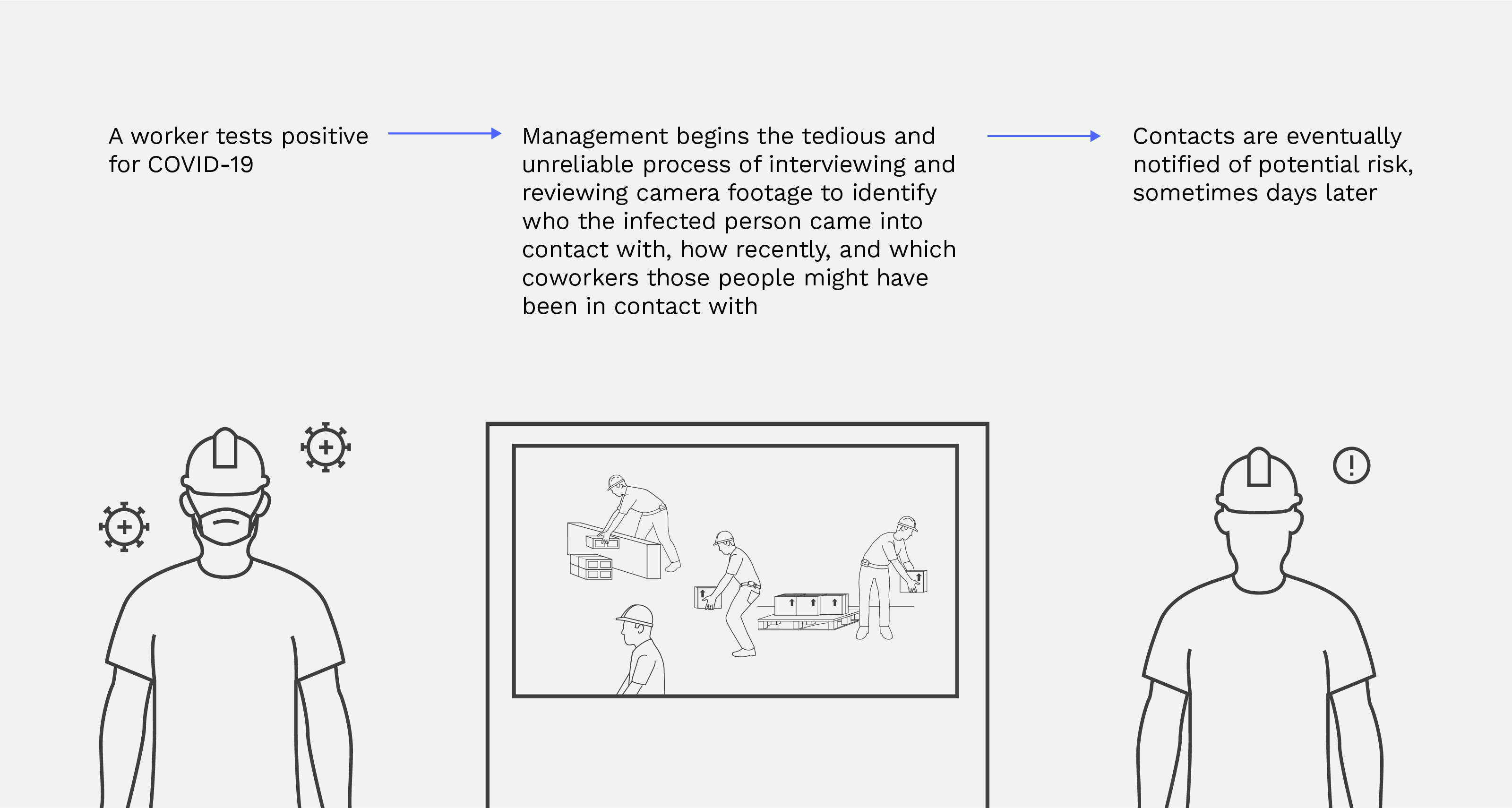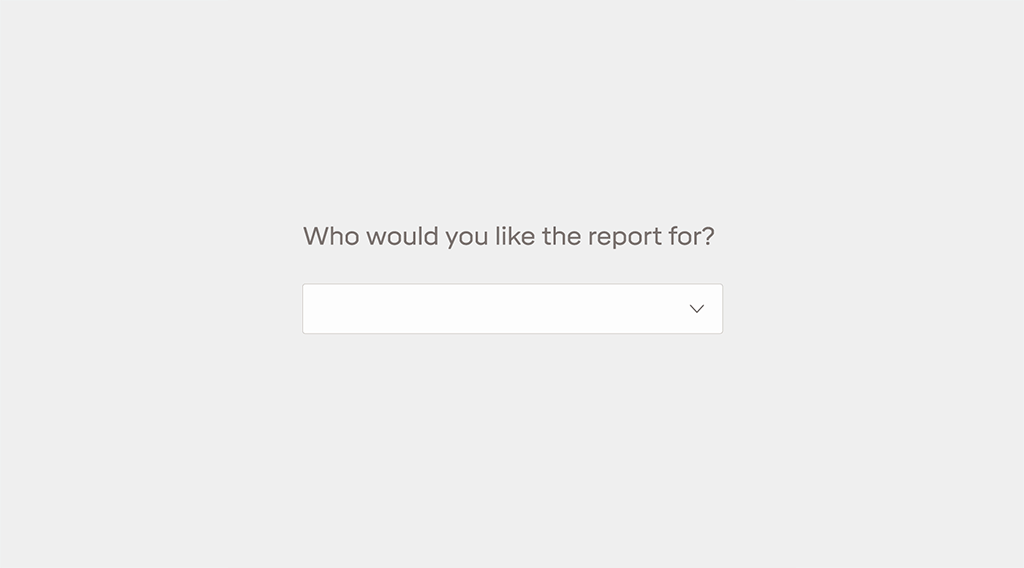Save Time, Reduce Risk with Data-Driven Contact Tracing
July 29, 2020

The idea behind contact tracing is simple – early detection and early response can help limit the spread of disease. It’s a process that’s been used to control viruses and plagues for hundreds of years. And it’s one companies are quickly adopting to keep their workplaces safe and open amidst the threat of Covid-19.
A recent survey showed over half of U.S. companies are starting contact tracing programs in their workplace.
While contact tracing is effective, it’s also traditionally a manual, time-consuming, and resource-intensive process. However, innovations in technology are automating the process, allowing for data-driven contact tracing capabilities that save time and improve accuracy.
Time Matters
Manual contact tracing in the industrial workplace often looks like this:

Manual contact tracing is a slow and unreliable process.
Besides being a drain on time and resources, and producing less-than-accurate results, this low-tech process is simply too slow. In the case of Covid-19, a person may have already been contagious 48 to 72 hours before they even started to experience symptoms. As such, time is of the essence when it comes to preventing transmission of the virus.
Control the Process, Control the Spread
The ability of smart technology to identify at-risk workers is much more efficient. When workers are outfitted with connected wearables, the devices use location data to automatically identify people who have come into contact with an infected or exposed coworker. Management can immediately access proximity data of workplace contacts, allowing them to notify at-risk employees quickly and efficiently.
With a few clicks, employers can know:
- – how many contacts an employee has had during a specified timeframe,
- – and specifically who, when, for how long, and even what group they belong to.

A contact tracing dashboard offers a simple, efficient way to view contact data for an individual employee.
A Dallas-based customer using the Kinetic Reflex wearable device reported a 50% reduction in time spent on contact tracing efforts when they had an employee test positive for Covid-19.
Proactively Manage Risk
Data-driven actions from a connected contact tracing solution go beyond informing at-risk employees, to initiating proactive strategies that can help prevent workplace virus transmission.
Data can be used to:
- – drive sanitization efforts in areas the infected employee utilized,
- – recognize high-risk timeframes when multiple close contacts are happening,
- – identify hot spots where multiple close contacts are regularly occurring.
For a leading manufacturer of lift equipment that recently deployed Kinetic wearables, data showed a clear peak time in both the number of employee contacts and their duration. Management used this information to make facility changes and implement additional safety protocols. Along with proximity alerts for safe distancing, data insights allowed for a reduction of close employee contacts by 79%.
A Smart Solution
As coronavirus workplace concerns persist, a data-driven contact tracing practice can help companies ensure a safe work environment and maintain business continuity. This innovative technology turns an effective, simple concept into an efficient, simple process that can slow the spread of the virus.
Haytham Elhawary
CEO & Cofounder, KINETIC
FEATURES
RESOURCES
2019 KINETIC © All rights reserved.